Spiny catfish - Acanthodoras cataphractus
Scientific name: Acanthodoras cataphractus
Common name: Spiny catfish
Family: Doradidae
Usual size in fish tanks: 10 - 12 cm (3.94 - 4.72 inch)
014
Recommended pH range: 6.2 - 7.5
Recommended water hardness: 4 - 18°N (71.43 - 321.43ppm)
0°C 32°F30°C 86°F
Recommended temperature range: 21 - 26 °C (69.8 - 78.8°F)
The way how these fish reproduce: Spawning
Where the species comes from: South America
Temperament to its own species: peaceful
Temperament toward other fish species: peaceful
Usual place in the tank: Bottom levels
Short description
The Spiny catfish (Acanthodoras cataphractus), also known as the Spiny talking catfish, is a small member of the Doradidae family native to the Amazon basin. It is a secretive, nocturnal bottom dweller equipped with sharp pectoral and dorsal spines for defense. By rubbing these spines against its shoulder girdle, it can produce audible “clicking” or “talking” sounds, especially when stressed or handled. In aquaria, it requires plenty of hiding places, subdued lighting, and soft substrates. During the day it remains hidden, becoming active mainly after lights out.
Origin
Native to South America, particularly the Amazon River basin in Brazil, Peru, and Colombia. It inhabits slow-moving tributaries, floodplain lakes, and leaf-littered margins with soft sandy or muddy substrates.
Food and feeding
A nocturnal omnivore. Feed after lights out to ensure it receives food. Accepts sinking pellets and wafers for catfish, supplemented with frozen and live foods such as bloodworms, brine shrimp, tubifex, and chopped earthworms. They will scavenge leftovers but should not be relied upon as “cleaners.”
Sexing
Females are usually larger and more rounded in the belly than males, especially when gravid. Males tend to remain slimmer.
Breeding
Captive breeding is rarely documented. In some cases, pairs have been observed excavating a shallow pit in the substrate and depositing eggs, with both parents guarding the clutch until hatching. However, reports of fry survival are lacking, making Acanthodoras cataphractus one of the more challenging Doradids to reproduce in home aquaria.
Lifespan
With proper care, they can live 8–10 years, sometimes longer. The often-quoted 5–8 years is conservative.
Behavior & compatibility
A shy and generally peaceful catfish suitable for community aquaria with medium-sized species. Avoid housing with very small fish or fry, which may be eaten during nocturnal foraging. They do well with other bottom dwellers provided each has adequate shelter. Best kept singly or in small groups in large aquaria with ample caves, pipes, or dense cover.
Tank requirements
- Tank size: minimum 150 liters for one; larger tanks preferred for groups.
- Substrate: soft sand or fine rounded gravel to protect barbels and allow burrowing.
- Aquascape: caves, driftwood, PVC tubes, and leaf litter for hiding.
- Lighting: subdued; floating plants help dim the tank.
- Filtration: efficient but not overly strong; they prefer gentle flow with high oxygenation.
The Spiny catfish (Acanthodoras cataphractus) has very sharp dorsal and pectoral spines that can easily get entangled in nets or puncture skin. Always use caution when handling or moving them. Instead of nets, use a container to catch and transfer the fish. This species can also produce audible “clicking” or “talking” sounds when stressed — this is normal and caused by rubbing its spines against the shoulder girdle.
Pictures
Bought by aqua-fish.net from jjphoto.dk.
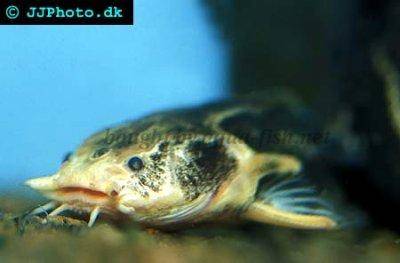



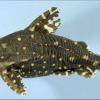 Thorny
Thorny 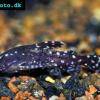 Raphael
Raphael 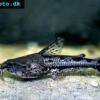 Marbled
Marbled 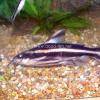 Striped
Striped